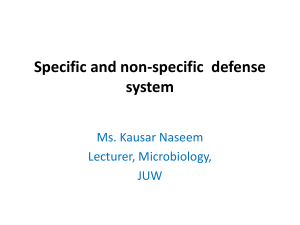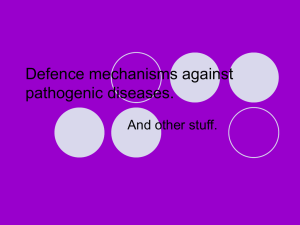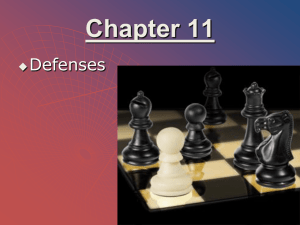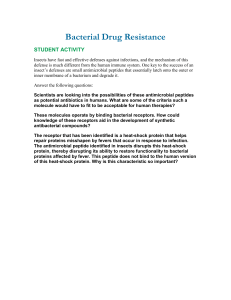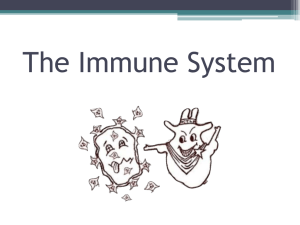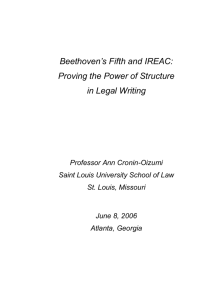Day 5 Basics of the Immune System - Answer Sheet
advertisement
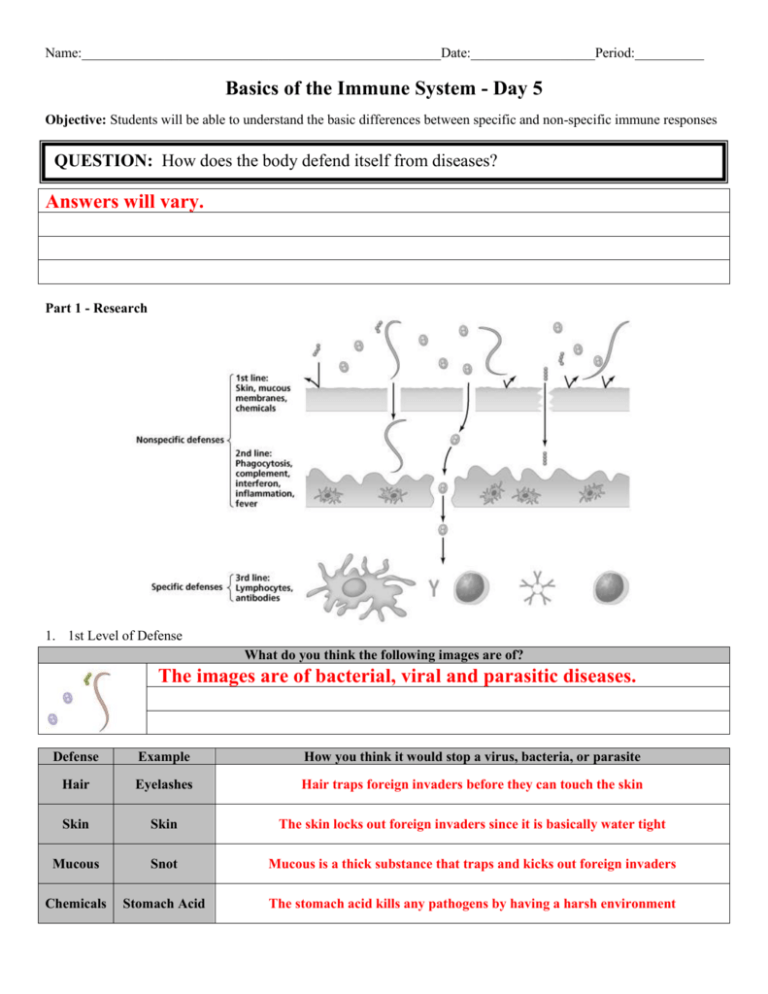
Name:____________________________________________________Date:__________________Period:__________ Basics of the Immune System - Day 5 Objective: Students will be able to understand the basic differences between specific and non-specific immune responses QUESTION: How does the body defend itself from diseases? Answers will vary. Part 1 - Research 1. 1st Level of Defense What do you think the following images are of? The images are of bacterial, viral and parasitic diseases. Defense Example How you think it would stop a virus, bacteria, or parasite Hair Eyelashes Hair traps foreign invaders before they can touch the skin Skin Skin The skin locks out foreign invaders since it is basically water tight Mucous Snot Mucous is a thick substance that traps and kicks out foreign invaders Chemicals Stomach Acid The stomach acid kills any pathogens by having a harsh environment 2. 2nd Level of Defense Take a look at the image and/or video of phagocytosis. In the space below draw and describe how our cells protect our bodies from foreign invaders. Answers will vary, but students should explain that the white blood cell hunts and eats the foreign invader How do you think a fever would help you fight off a viral, bacterial or parasitic invasion? Your Thoughts Notes Fevers are induced by the body as a simple way to make the environment less hospitable to the foreign invaders. Many times the increase in temperature stops the invader from reproducing or obtaining energy 3. 3rd Level of Defense The human body has two general ways of protecting itself from foreign invaders (viruses, bacteria, and parasites). The processes are known as non-specific and specific defense. Non-specific defenses start at the surface of our bodies and can include hair, skin, sweat, mucous, tears, and even saliva. These defenses generally block or trap foreign invaders before they get the chance to enter the body. If by chance, these pathogens get past the surface area, we have cells that patrol the blood stream looking for anything that does not belong. These white blood cells are referred to as macrophages and they eat (through a process called phagocytosis) any foreign object. These defenses are non-specific because they do not target any one bacterial or viral disease. Specific defenses are referred to as immunity. Immunity refers to the body's ability to "learn" and target specific bacterial and viral diseases. Each foreign invader has a marker called an antigen. Your white blood cells (called lymphocytes) learn these antigens and create antibodies that signal to the white blood cells that they are dealing with a specific foreign invader and it has to be destroyed. This level of defense is very important because many bacteria and viruses have learned to camouflage themselves inside the body. An amazing fact is that you have white blood cells that are called memory cells. These cells recall all diseases that have invaded your body and they teach other white blood cells how to kill the pathogens before they can make you sick again. Read the article to the right and describe The difference between non-specific and specific defenses: Non-specific defenses attack any all foreign invaders, and do not target specific diseases Specific defenses learn to target, find and kill specific foreign invaders. Why would your body need a specific defense system if you already have a non-specific defense system? Since most foreign invaders are blocked by our nonspecific defenses, the need for specific defenses becomes very important. The foreign cells that get past our nonspecific diseases are much savvier and need a specific and targeted response. Conclusion: If you were an evil bacterial cell, how would you enter the body and avoid detection in the blood? Answers will vary, but could include: Non-Specific Defenses: Hair, Skin, Mucous, Stomach Acid, and Phagocytosis Specific Defenses: Immunity, learning and targeting cells, lymphocytes, antibodies and antigens.
